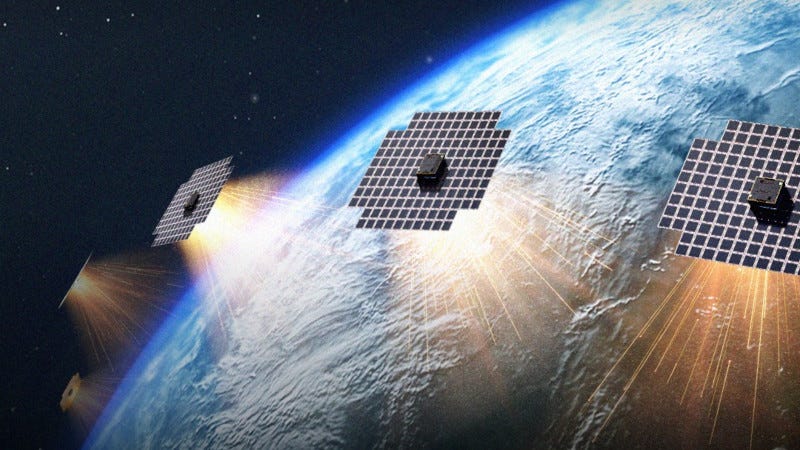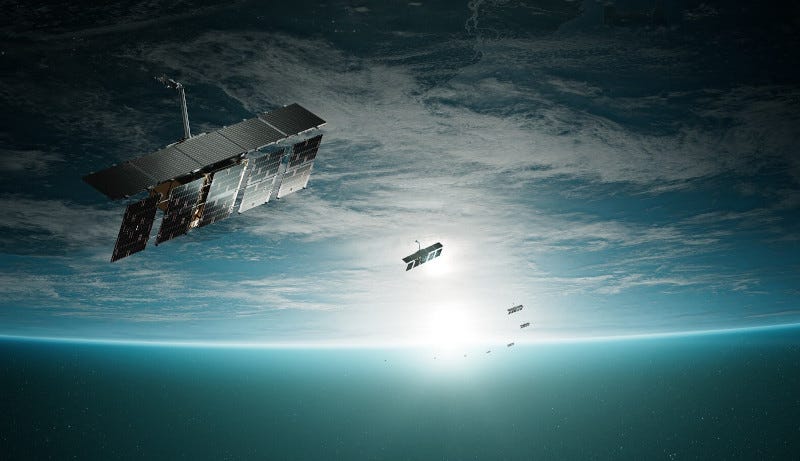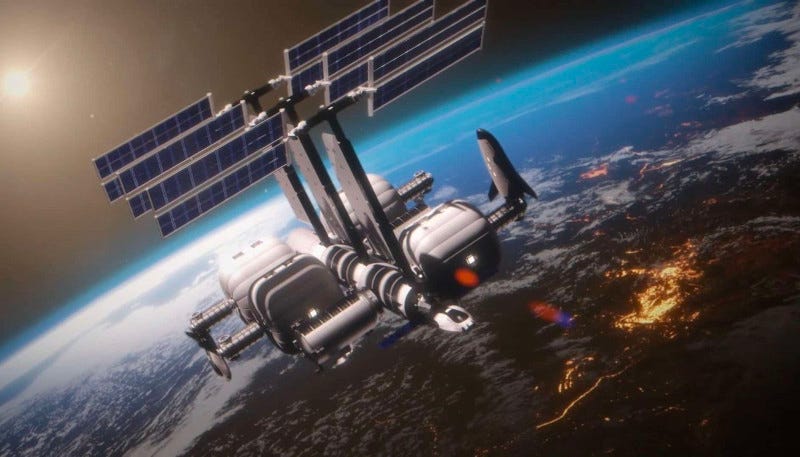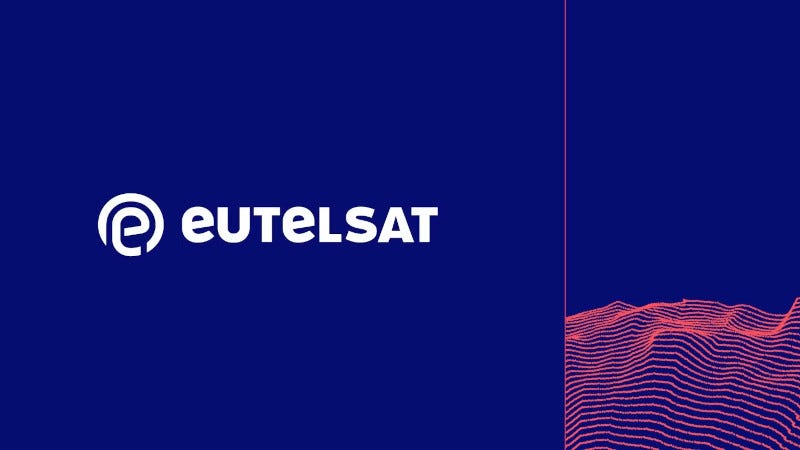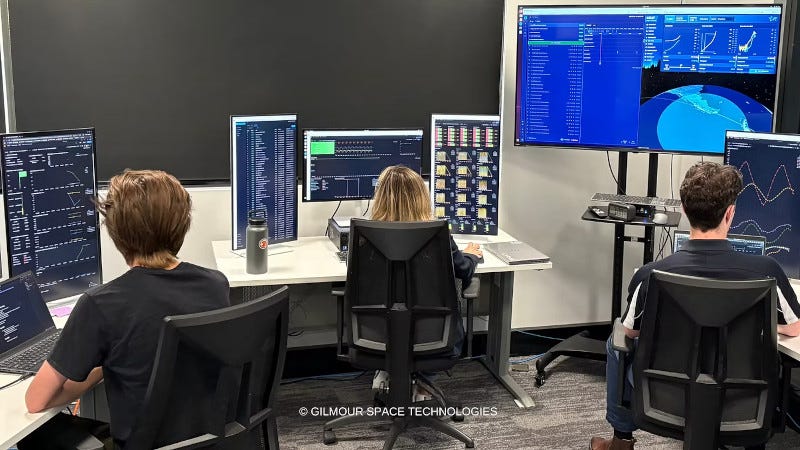Federal regulators accepted applications that would enable satellites to provide cellular coverage directly to existing smartphones in partnership with major wireless carriers. The FCC announced last week that AST SpaceMobile and AT&T, Verizon, and FirstNet have filed joint applications for supplemental coverage from space authorization. The Space Bureau, Wireless Telecommunications Bureau, and Public Safety and Homeland Security Bureau found the applications acceptable for filing after initial review.
AST SpaceMobile seeks authority to operate 248 non-geostationary orbit satellites that would work with terrestrial networks from AT&T, Verizon, and FirstNet, and would use existing cellular frequency bands for the service.
The company filed applications to modify its existing satellite authorization on June 12, with amendments submitted July 21 and Sept. 3.
The applications require multiple waivers of current FCC rules. The companies seek waivers to deploy supplemental coverage in areas where terrestrial carriers don't hold spectrum across entire geographic service areas. They also request permission to provide service on devices certified before June 29, 2024, that lack specific authorization for satellite operations.
Under existing rules, satellite operators and wireless licensees can enter spectrum leases only when holding all co-channel licenses throughout one of six geographic service areas. AST SpaceMobile, AT&T, and Verizon argue their cellular licenses don't cover entire continental U.S. areas, necessitating rule waivers.
-0-
The satellite payload market is projected to be nearly 11 and a half billion dollars in 2030, up from just over 6 billion in 2025 ($11.44 billion in 2030 from $6.07 billion in 2025) at a CAGR of 13.5% during the forecast period according to a new report from MarketsandMarkets. The growth is mainly due to the expansion of sovereign and regional mega constellations for strategic and commercial communications, international strategic collaborations, and flagship Earth observation missions.
The market is witnessing strong growth globally, fueled by the rising international partnerships and collaborations for Earth Observation applications across different regions, and the rising number of satellite constellation launches for mega constellation projects. Further, the growth of the satellite payload market is attributed to the demand for high-speed internet and telecommunication services, along with the need for better management of Earth Observation satellite missions.
The LEO segment is expected to register the highest CAGR in the market during the forecast period. As operators and governments compete to secure space-based connectivity and Earth observation capabilities, the global satellite payload market is changing due to the increasing demand for payloads from Low Earth Orbit (LEO) constellations.
In recent years, there has been an unprecedented demand for satellite payloads that are lighter, more modular, and more mass-producible due to mega-consortia like SpaceX's Starlink, OneWeb, and Amazon's Kuiper. There will be a sustained need for payloads in the areas of scientific research, communications, and imaging, as evidenced by the fact that Starlink alone required more than 6,000 operational satellites in 2024 and is expected to launch new batches at an unprecedented rate.
The large satellite segment is projected to dominate the satellite payload market share in 2025, primarily due to its high cost of payloads compared to that of small & medium satellites. Europe is projected to account for the second-largest market share because of the presence of some of the major satellite payload manufacturers, including Airbus and Thales, along with the megaconstellation projects such as OneWeb.
-0-
NASA is requesting feedback from American companies on the next phase of its commercial space stations strategy to ensure a seamless transition of activities in low Earth orbit from the International Space Station.
Under the direction of acting NASA Administrator Sean Duffy, the agency reassessed the commercial space stations acquisition strategy to ensure mission continuity, affordability, and national alignment, and to reduce the potential for a gap of a crew-capable platform in low Earth orbit.
In Phase 2, NASA intends to support industry’s design and demonstration of commercial stations through multiple funded Space Act Agreements, selected through a full and open competition.
The Phase 2 agreements are expected to include funded milestones leading to critical design review readiness and an in-space crewed demonstration of four crew members for a minimum of 30 days. Agreements are expected to include up to a five-year period of performance.
-0-
Why not take a minute to become a paid subscriber to The Journal of Space Commerce. Whether you’re a space professional, investor or an enthusiast, paid subscribers have first access to premium articles and podcasts focused on the new space economy. Just visit click the button below to help keep The Journal of Space Commerce independent as we chronicle, cajole and, when necessary, critique the commercial space industry.
-0-
A demonstration of how GPS navigation can be bolstered by using Low Earth Orbit (LEO) satellites has been conducted by QinetiQ an Xona Space Systems, marking a major milestone in the development of next generation Positioning, Navigation and Timing (PNT) capabilities. The goals are to increase resilience against jamming and spoofing, as well as improving GPS availability in congested or challenged environments.
In the first UK tests of Xona’s new satellite navigation system, called Pulsar, QinetiQ’s Q40 Global Navigation Satellite System (GNSS) receiver, which can already receive signals from multiple GNSS satellite constellations on multiple frequencies, acquired and tracked signals from Xona’s first production-class satellite, Pulsar-0. The tests demonstrated that by supplementing GNSS with LEO satellite signals like the Pulsar X1, enhanced resilience in contested or poor-signal environments can be achieved.
A recent software upgrade to QinetiQ’s Q40 was developed under ESA's Navigation Innovation and Support Program (NAVISP) as part of the GNSS Receiver with Advanced Pulsar Enhancement (GRAPE) project. GRAPE is a collaboration between QinetiQ and Xona, supported by the UK Space Agency and ESA. Its goal is to explore how new LEO-based signals can be integrated with existing GNSS, to enhance the accuracy and resilience of navigation services for defence, critical infrastructure, and future autonomous applications.
-0-
Eutelsat Group has announced that it is rebranding simply as Eutelsat, bringing all its activities and subsidiaries under one brand. This evolution reflects the company’s transformation into a global connectivity leader and its commitment to providing a clear, consistent identity for customers, partners, and shareholders worldwide.
Following its successful merger with OneWeb, which created a unique GEO-LEO operator, Eutelsat now operates as a single company. The LEO constellation will continue under the OneWeb name, highlighting its central role in delivering the low-latency, high-speed services that power Eutelsat’s global advantage and future growth.
With its new name and consolidated digital presence, Eutelsat says it looks ahead with confidence, focused on supporting the people and organizations it connects every day.
-0-
The Gilmour Space Eris rocket launch may not have been as successful as the company would have liked, but they did note a significant milestone in the Australian space program this week.
Launched aboard SpaceX’s Transporter-14 mission in June, the ElaraSat MMS-1 (Multi-Mission Satellite-1) has completed platform commissioning and has successfully demonstrated reliable S-band communications and X-band downlink.
MMS-1 carries a hyperspectral imager from CSIRO, Australia’s national science agency.
Locally designed and built in Australia, the modular ElaraSat bus can be adapted for missions hosting payloads of up to 30 kilograms, and is compatible with a variety of launch vehicles, including the Gilmour Space Eris orbital rocket.
-0-
In Depth this week, we examined the unprecedented opportunities and complex risk calculations afforded by President Donald Trump's Executive Order "Enabling Competition in the Commercial Space Industry", which represents the most aggressive attempt to streamline space regulations in decades.
The order establishes a unified framework reducing environmental review timelines from years to months, while creating "one-stop shopping" for launch licenses through the FAA. This streamlining directly impacts investment thesis calculations, as reduced regulatory uncertainty translates to improved project economics and faster capital deployment.
The commercial space sector, which represents 78% of the $613 billion global space economy, stands to benefit significantly from these changes, and investment flows reflect growing confidence in regulatory reform. Space technology startups raised $1.6 billion in the first quarter of 2025, indicating a strong institutional appetite for the sector.
Still, the tension between efficiency and safety creates nuanced investment considerations. Traditional aerospace safety protocols evolved over decades of government oversight, with extensive environmental reviews designed to protect both public safety and environmental resources. Critics argue that accelerated timelines may compromise thorough risk assessment, particularly for launch operations near populated areas.
The Executive Order's impact varies across space applications, creating differentiated investment opportunities. Satellite broadband and Earth observation represent significant near-term market opportunities, with multiple constellation programs competing for market position. And launch services remain foundational to sector growth.
President Trump's Executive Order on commercial space competition represents a significant regulatory approach shift that will reshape investment opportunities and risk calculations. The debate between efficiency and safety reflects the fundamental challenge of managing technological advancement in high-stakes environments. Paid subscribers can read the full analysis on The Journal of Space Commerce at exterrajsc.com.
-0-
And those are some of the top stories we covered for you on The Journal of Space Commerce this week. Space Commerce Week is a production of Ex Terra Media. You can get daily updates on space commerce by subscribing to The Journal of Space Commerce on Substack at www.exterrajsc.com. And please consider becoming a paid subscriber. Whether you’re a space professional, investor or an enthusiast, paid subscribers have first access to premium articles and podcasts focused on the new space economy. Just visit www.exterrajsc.com and help keep The Journal of Space Commerce independent as we chronicle, cajole and, when necessary, critique the commercial space industry.
-ends-
Theme Stock Music provided by CoolTones, from Pond5




